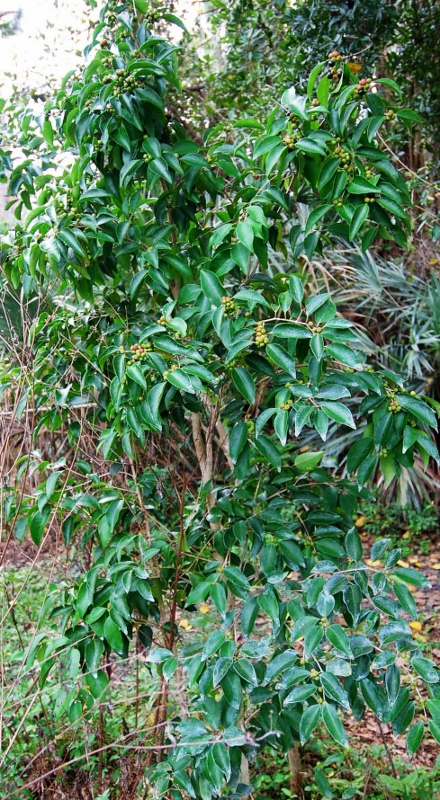
White Stopper
Eugenia axillaris
White Stopper is found along the coast and in inland hammocks from the Keys through Volusia County. Although it may reach a height of 30 feet, most are 12 feet and can be trimmed to much less. The growth is upright and narrow.
It is drought tolerant once established and tolerant of salt air when planted in back of other vegetation. White Stopper can even tolerate a short period of salt water flooding after a storm.
Although it prefers rich hammock soil, average soil will due. The masses of small white flowers are fragrant in the spring and are followed by green to red to black edible berries which are favored by birds in late winter.
Mix with any coastal or hammock species in sun or deep shade. A deep shade mix includes: Marlberry, Wild Coffee, Spanish Stopper, Native Plumbago (known as Leadwort), Snowberry and Lancewood as an understory tree.
Out in full sun, Saw Palmetto, Myrsine, Fiddlewood, Simpson Stopper, Coralbean, Beach Cocoplum, Scrub Redbay, Necklace Pod, Jamaica Caper, Florida Privet and most other hammock species will combine with this narrow shrub.
Some people think the foliage smells like a skunk, yet it is more of a faint fragrance of coffee and reminds one of the natural smell of the hammock forest.
I find that a group of several oddly spaced White Stopper looks natural and will provide a screened, private place to sit. Since White Stopper, like Marlberry suckers, it will continue to spread making a natural flowing screen. The Planted look will transform into a completely natural look over time.
It is a bit hard to tell the difference between White Stopper and Red Stopper. I find that the Red Stopper has more closely spaced leaves lined up in a plane. The leaves also tend to be more round and shorter while the bark is light gray.
The White Stopper has white bark, larger leaves that tilt like a Jalousie Window and are farther apart on the stem. They have an almost whorled appearance rather than the flat lineup of the Red Stopper.
Click for more info on White Stopper. Click for info on Red Stopper.